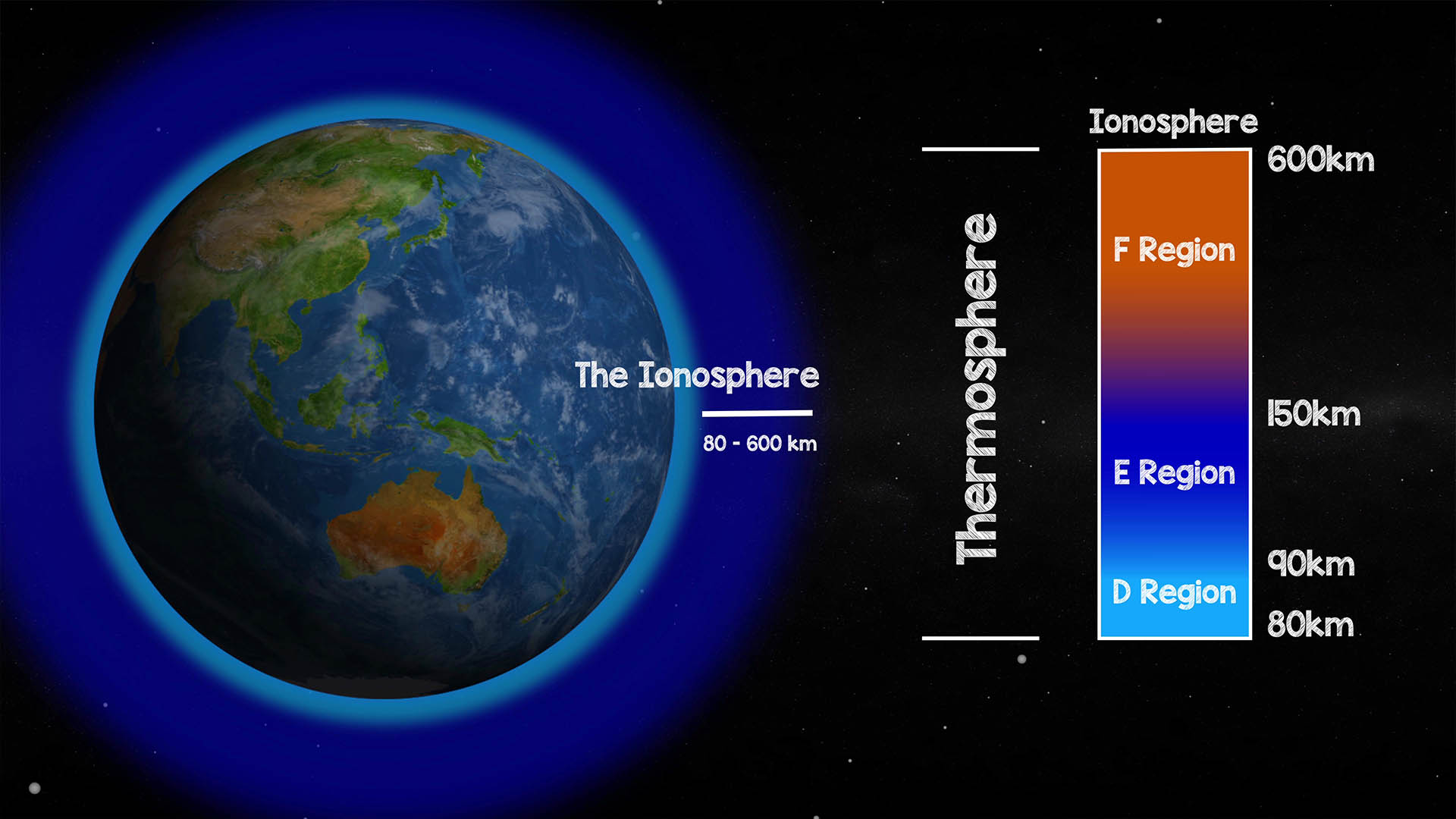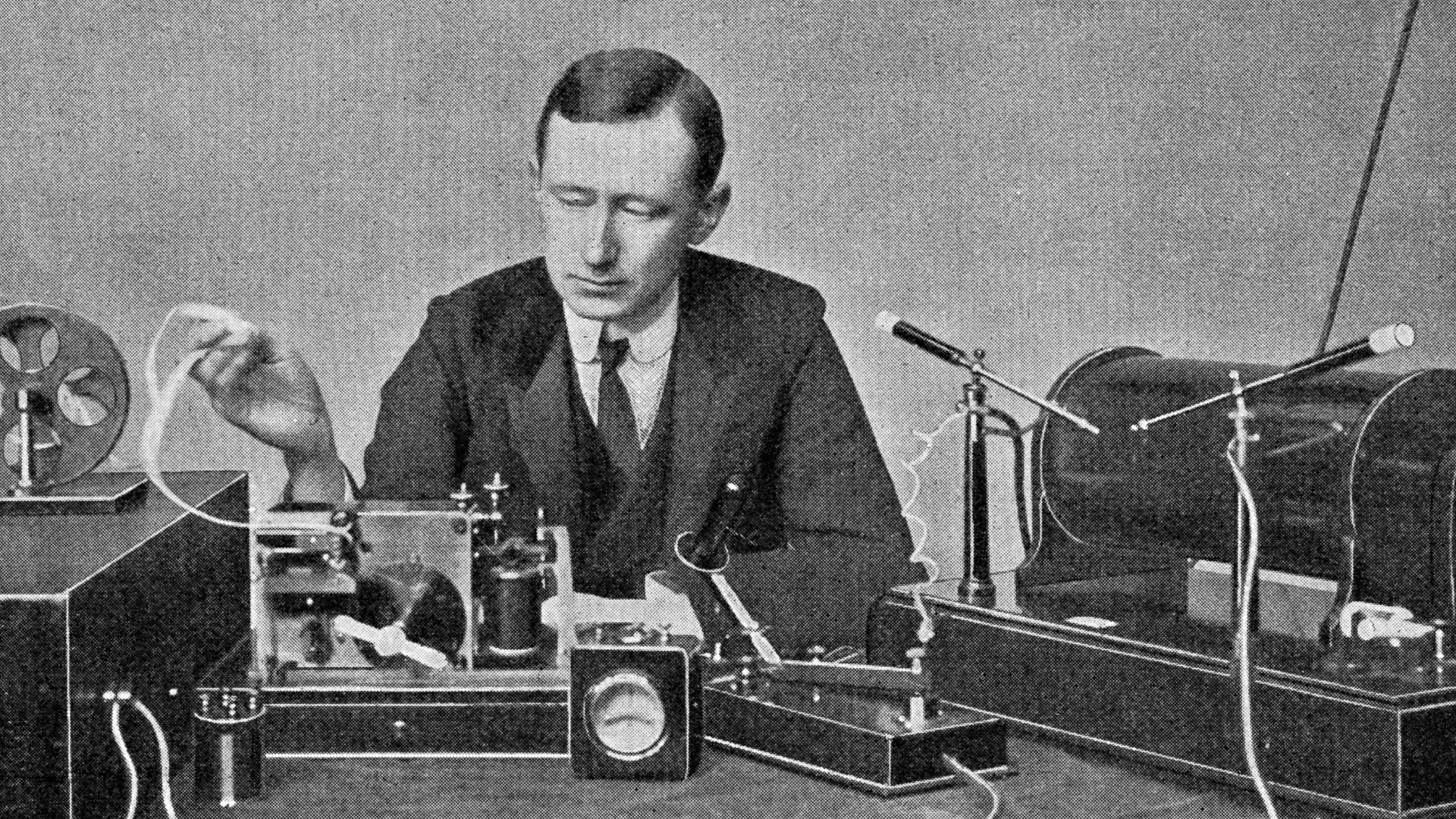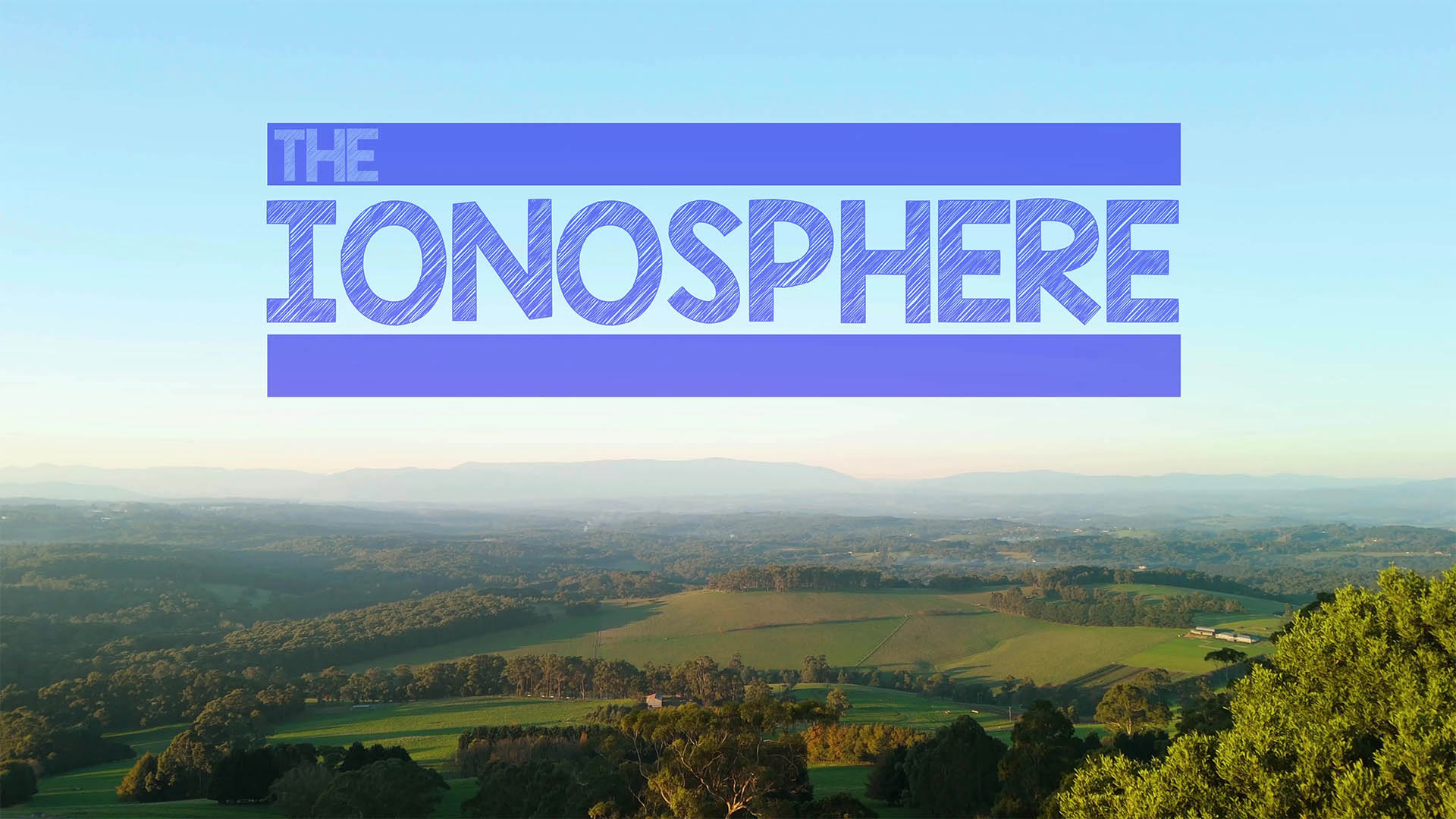
13 Jun The Ionosphere
Last Updated on June 29, 2024
The Ionosphere – Earth’s ionised upper atmosphere
The ionosphere is the ionized part of Earth’s upper atmosphere that extends from about 80 to 600 km above sea level. It’s a region within the thermosphere filled with charged particles that play a crucial role in radio communication by reflecting radio waves back to Earth. It also contributes to the occurrence of auroras and is ionized by solar radiation.
The ionosphere has historically been divided into regions (D, E, and F) , with the term “layer” referring to the ionization within a region.
The lowest is the D-Region between 50 and 90km in altitude. Next is the E region between 90 and 150km and the F-Region is the ionosphere above the E-Region.
During the day, the F-Layer splits into two layers, F1 and F2, then recombines at night.
Ionization is the process by which ions are formed by gain or loss of an electron from an atom or molecule.
Since the ionosphere’s existence is due to radiation from the sun striking the atmosphere, all three layers are more dense during day. At night, they decrease in density, with the D-Layer essentially disappearing.
Historically, what we know today as the E-Layer was discovered first.
The ionosphere contains a high concentration of free electrons and ions, created by the ionization of atmospheric gases due to solar and cosmic radiation. When radio waves travel upward and encounter these charged particles, their paths are altered. For lower frequency waves, this often results in the waves being bent or refracted back towards the Earth’s surface. The degree of bending depends on the frequency of the radio waves and the density of ions in the ionosphere. Higher frequency waves might pass through the ionosphere, while lower frequencies can be reflected back, allowing long-distance communication by “bouncing” the waves between the ionosphere and the Earth’s surface.
Marconi’s first transatlantic radio transmission
In 1901, Marconi transmitted a signal between Europe and North America and showed that it had to bounce off an electrically conducting layer at about 100 km altitude. It became apparent that the radio waves followed the earth’s curvature.
Physicists assumed that the radio waves were being reflected from a layer in the atmosphere where the sun’s ultraviolet light had liberated electrons from their atoms.
Marconi’s greatest achievement came on December 12, 1901, when he received a message sent from England at St. John’s, Newfoundland. The transatlantic transmission won him worldwide fame. Ironically, detractors of the project were correct when they declared that radio waves would not follow the curvature of the earth, as Marconi believed. In fact, Marconi’s transatlantic radio signal had been headed into space when it was reflected off the ionosphere and bounced back down toward Canada.
In 1909, Marconi was jointly awarded the Nobel Prize in physics with the German radio innovator Ferdinand Braun. After successfully sending radio transmissions from points as far away as England and Australia, Marconi turned his energy to experimenting with shorter, more powerful radio waves.
Sir Edward Appleton and the “Appleton Layer”
Sir Edward Appleton was awarded the Nobel Prize in Physics in 1947 “for his investigations of the physics of the upper atmosphere especially for the discovery of the so-called Appleton layer which we know today as the F layer”
When radio signals were sent across the Atlantic at the beginning of the 20th century, it became apparent that the radio waves followed the earth’s curvature. Physicists assumed that the radio waves were being reflected from a layer in the atmosphere where the sun’s ultraviolet light had liberated electrons from their atoms. By studying the superposition, or interference, of radio waves that had taken different paths, Edward Appleton established the existence of this layer—the ionosphere—in 1924. In 1927 he demonstrated that an additional layer existed outside the one discovered previously. Appleton’s methods also came to have implications for the development of radar.
Layers of the Ionosphere
The D Layer
The D-layer is the lowest region of the ionosphere, situated approximately 50 to 90 kilometres above the Earth’s surface. Unlike the higher layers of the ionosphere, the D layer contains a lower density of free electrons, as ionization primarily occurs due to the absorption of solar X-rays and Lyman-alpha radiation. This layer is most prominent during the daytime, diminishing significantly at night when ionizing radiation from the Sun is absent.
The D-layer can absorb high-frequency radio waves, leading to signal attenuation and degradation of radio communication, particularly for frequencies below 10 MHz. Its presence and behaviour are also influenced by solar activity, such as solar flares, which can temporarily increase ionization levels and affect communication signals.
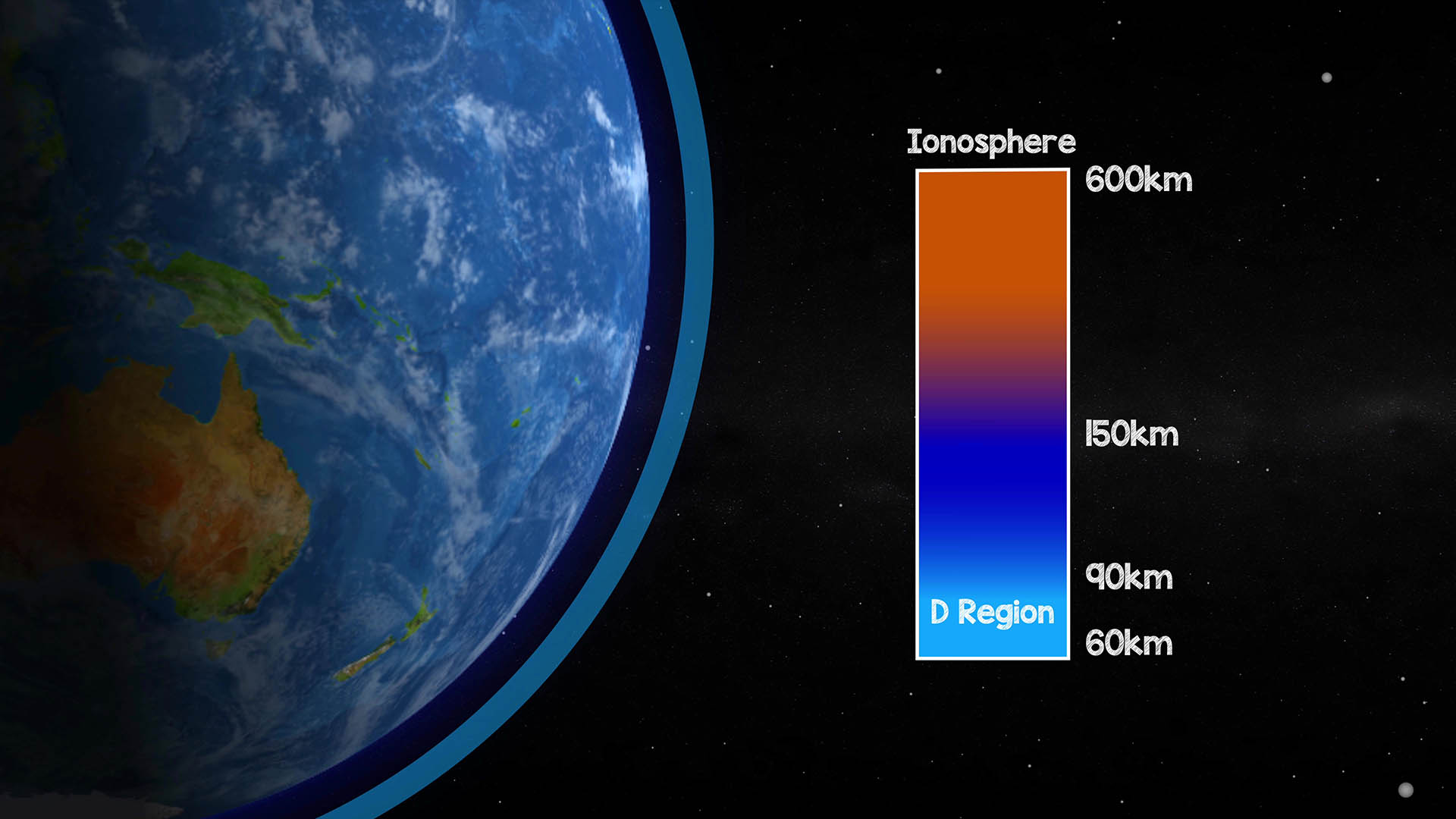
The E Layer
The E-layer, or the “Electrical Layer” lies approximately 90 to 150 kilometers above the Earth’s surface. The E-layer is mainly ionized by the soft X-rays and also by EUV (Extreme Ultra Violet). It’s a thin layer, roughly 5 to 10 km thick. During daytime hours, the ionisation characteristics are practically similar to those of the D region. Clouds of electrons create propagation called Sporadic-E. The E region can be regarded as the transition zone from the earth’s atmosphere into space; there are discontinuities in pressure, temperature and chemical composition at this height
Sporadic E propagation is a result of highly ionised patches or “clouds” that occasionally form in the E region of the ionosphere.
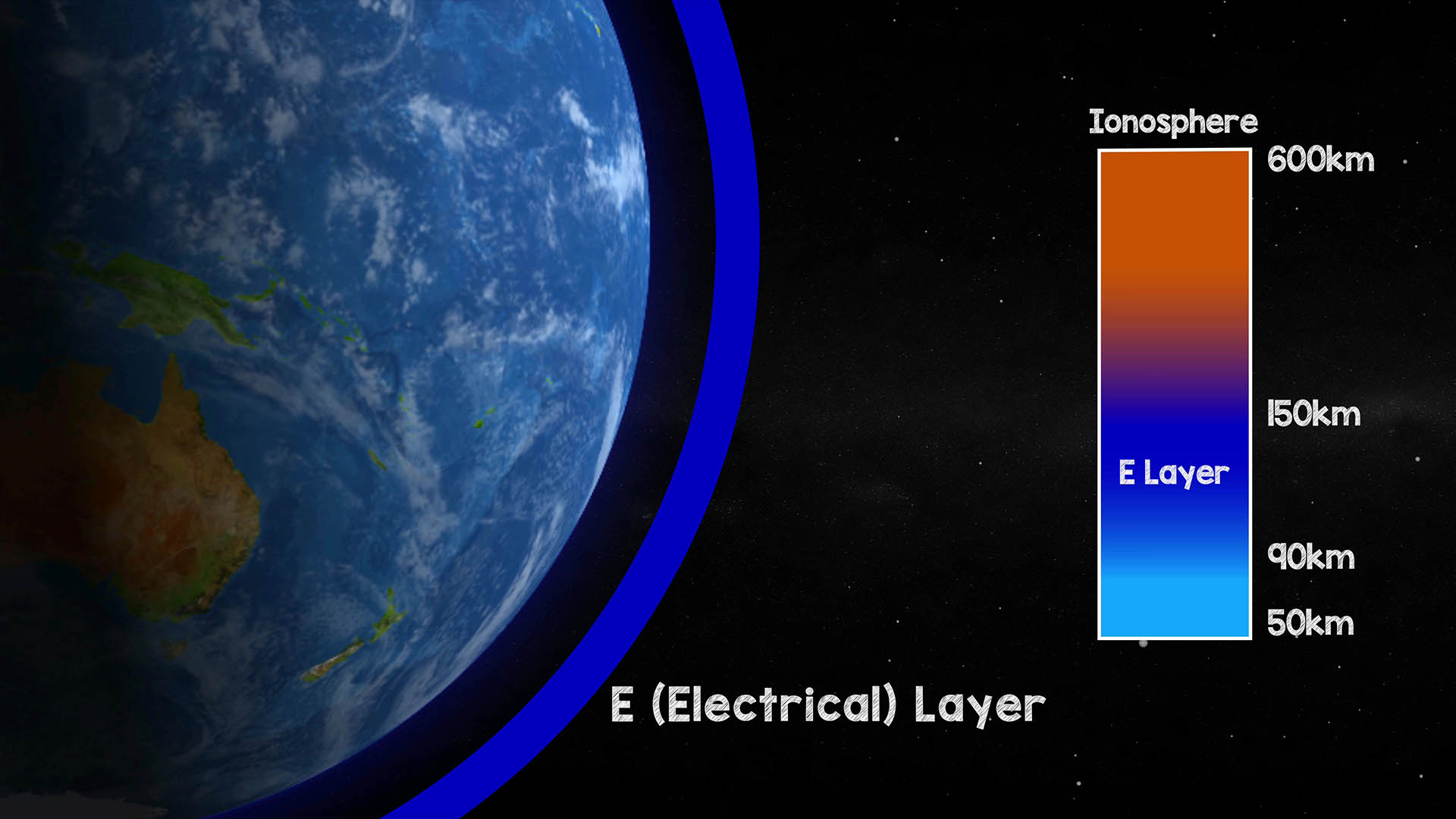
The F Layer
One important layer from the standpoint of Navigation and Communication is the F2 layer, where electron concentrations reach their highest values.
The F-layer is ionized by Extreme UltraViolet light (EUV) and high ultraviolet. During daylight, it splits the layer into two parts. The lower part starts at roughly about 150 km altitude and becomes the “F1-Layer.” The higher portion begins at about 200 km altitude and becomes the “F2-Layer.” The given heights are not to be taken as absolute; they vary continuously.
The F1-layer is much weaker and plays only a minor role in propagation. It acts more like the E-layer than the F2-region.
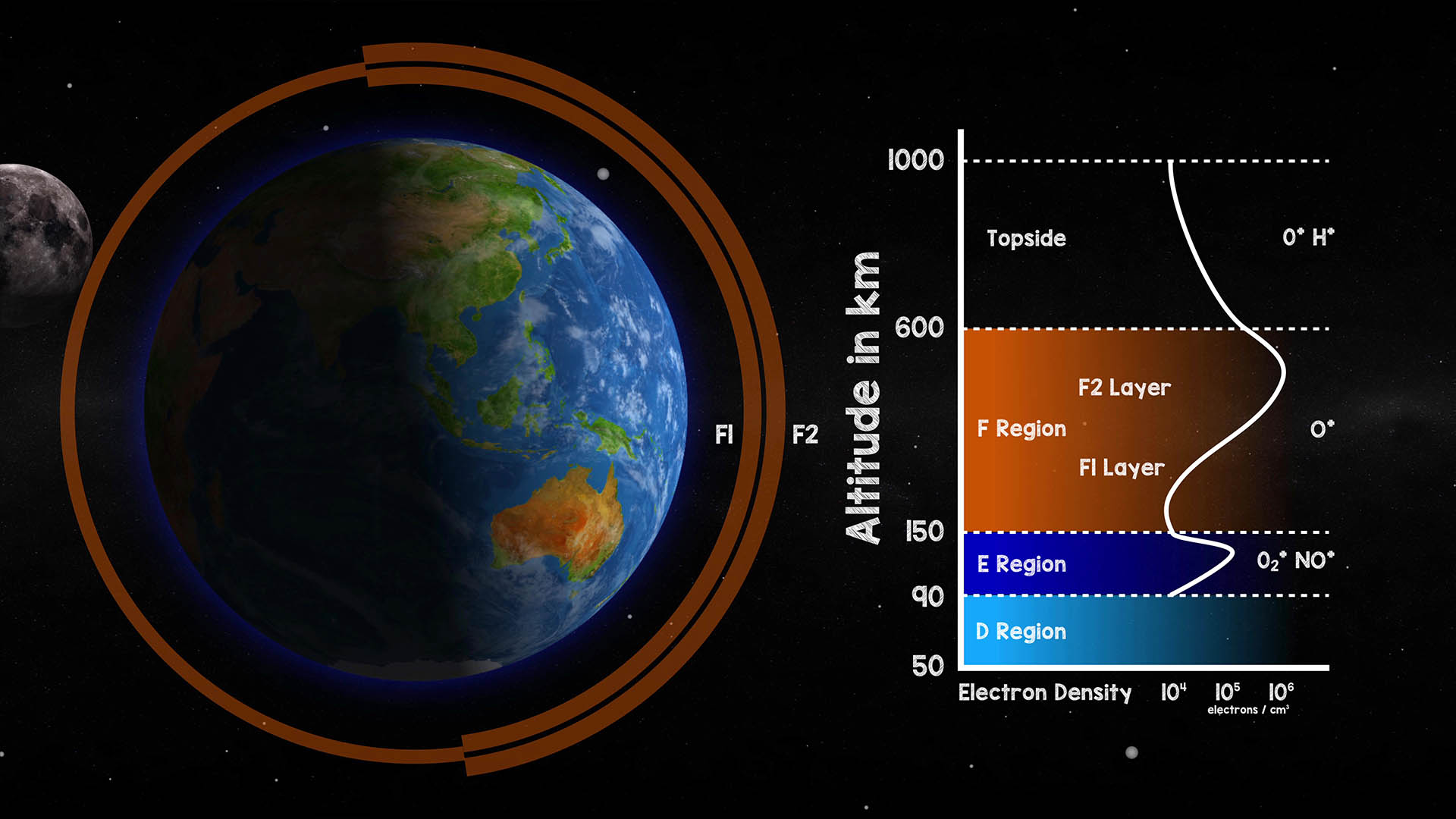
The Radio Spectrum and Propagation Modes
| Name | Frequency range | Primary propagation Modes |
|---|---|---|
| Extremely low frequency (ELF) | <3kHz | Earth-ionosphere waveguide penetrates sea water |
| Very low frequency (VLF) | 3 - 30 kHz | Waveguide (between ground and lower ionosphere), Ground wave |
| Low frequency (LF) | 30 - 300 kHz | Waveguide, Ground wave |
| Medium frequency (MF) | 300 - 3000 kHz | E-region reflection (night), Ground wave |
| High frequency (HF) | 3 - 30 MHz | Reflection from E and F regions |
| Very high frequency (VHF) | 30 - 300 MHz | Line of sight, Scatter from ionosphere |
| Ultra high frequency (UHF) | 300 - 3000 MHz | Line of sight (affected by ionospheric irregularities) |
| Super high frequency (SHF) | 3000 - 30000 MHz | Line of sight (tropospheric, affected by ionospheric irregularities) |
In general, on frequencies below 30 MHz the ionosphere is essential to users whereas on frequencies much above 50 MHz, the
ionosphere is a source of annoyance as, for example, in Earth-space communications. Ionospheric radio propagation is characterized by amplitude fading, ray penetration, absorption, etc., making it unreliable for certain uses.
Historical
Above the F-peak of electron density is the topside and above that is the protonosphere or plasmasphere. The boundaries between these regions are not well defined. The alphabetic nomenclature of the ionosphere was introduced by Sir Edward Appleton who used the letters E and F for electric and field.
It is worth noting that ionospheric physicists use the term ‘ionosphere’ to distinguish the ionized part of the upper atmosphere from the background neutral gas. The structures and peak densities in the ionosphere vary greatly with time (sunspot cycle, seasonally and diurnally), with geographical location (polar caps, auroral zones, equatorial regions), and with certain solar disturbances.
The F1 and F2 layers are two distinct sub-layers within the ionosphere’s F region, each with different characteristics:
Altitude:
-
- The F1 layer is located at a lower altitude, roughly between 150 and 220 kilometres above the Earth’s surface.
-
- The F2 layer is situated higher, approximately between 220 and 800 kilometres above the surface.
Electron Density:
-
- The F1 layer has a lower electron density compared to the F2 layer. It is more variable and can be influenced by daily solar activity.
- The F2 layer has the highest electron density of all the ionospheric layers, which makes it the most important for high-frequency (HF) radio communications. This layer is less affected by daily changes and remains more stable.
Diurnal Variation: (fluctuations that occur during each day)
-
- The F1 layer tends to disappear at night because the lack of solar radiation reduces ionization.
- The F2 layer persists both day and night, although its density can vary. During the day, it is more ionized due to increased solar radiation, and at night, it experiences a decrease in ionization but remains present due to its higher altitude and residual ionizing processes.
Role in Radio Communication:
-
- The F1 layer primarily affects lower HF frequencies during the daytime.
- The F2 layer is crucial for long-distance HF radio wave propagation because it can reflect higher frequency radio waves over long distances, even during nighttime.
Understanding these differences is essential for optimizing radio communication, as the varying properties of the F1 and F2 layers influence the effectiveness and range of radio signal transmission.
Aurora – High latitude ionisation
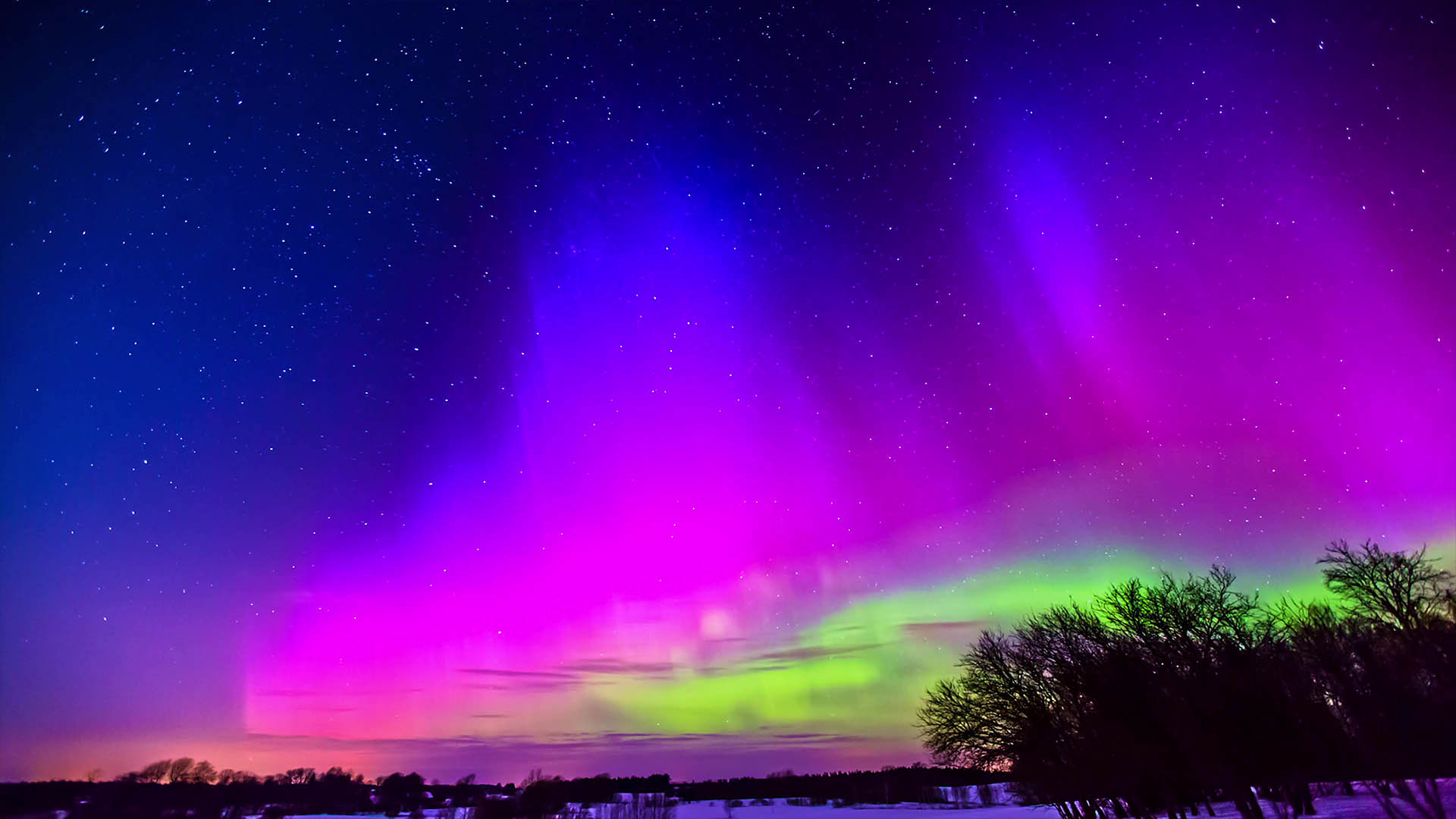
At high latitudes there is another source of ionisation called the aurora. The aurora is a display of light caused by electrons and protons striking the atmosphere at high speed. The particles come from the magnetosphere and spiral down the magnetic field lines of the Earth. These particles produce a spectacular array of light, and when they strike the atmosphere they also produce ionisation.
Bouncing radio signals off the Ionosphere is what allows radio signals to reach places all over the world. Overall, the ionosphere’s layers interact with radio waves based on their frequencies and the time of day, with higher layers generally supporting long-distance HF communication and lower layers absorbing or reflecting lower frequency waves.
Souces:
The Ionosphere. Space Environment Centre Colorado
Ionospheric Radio by Kenneth Davies Book DOI: 10.1049/PBEW031E
